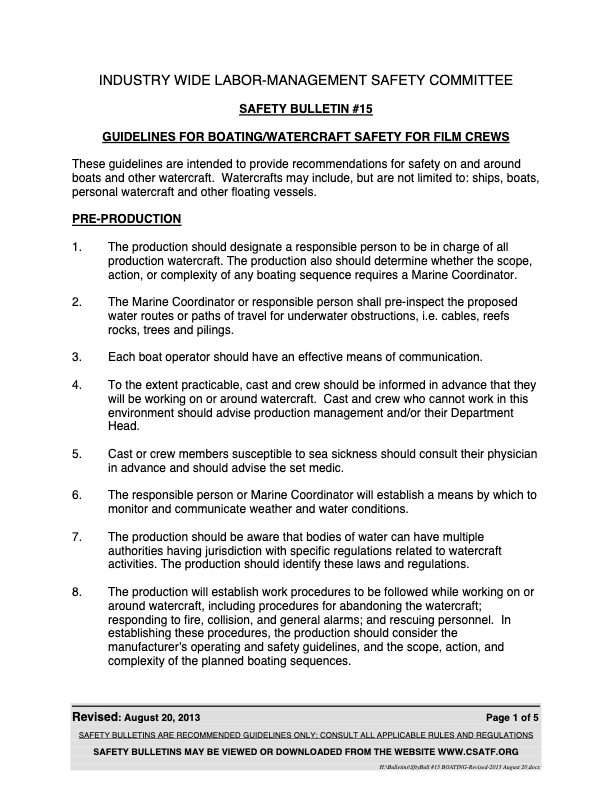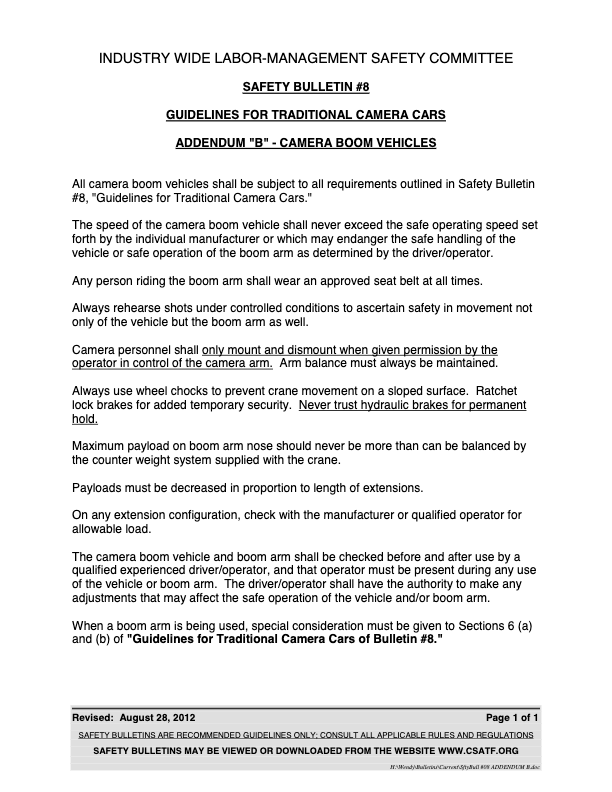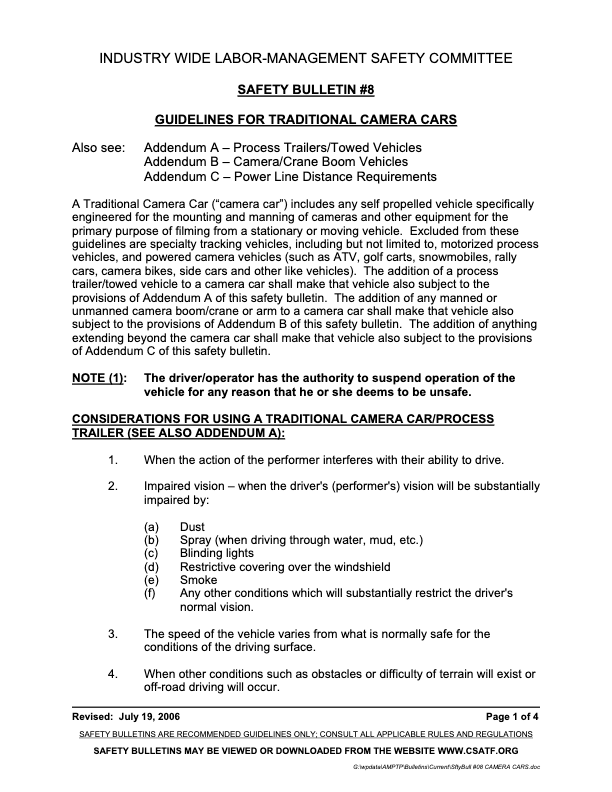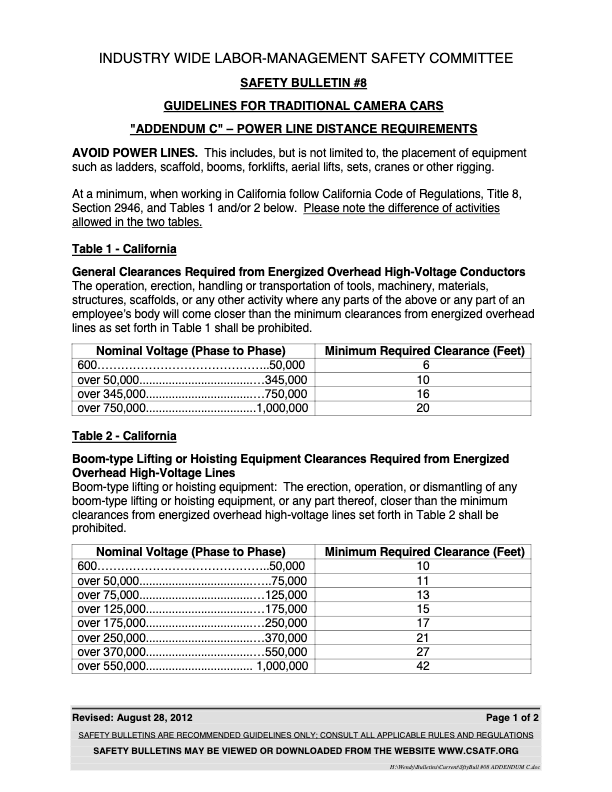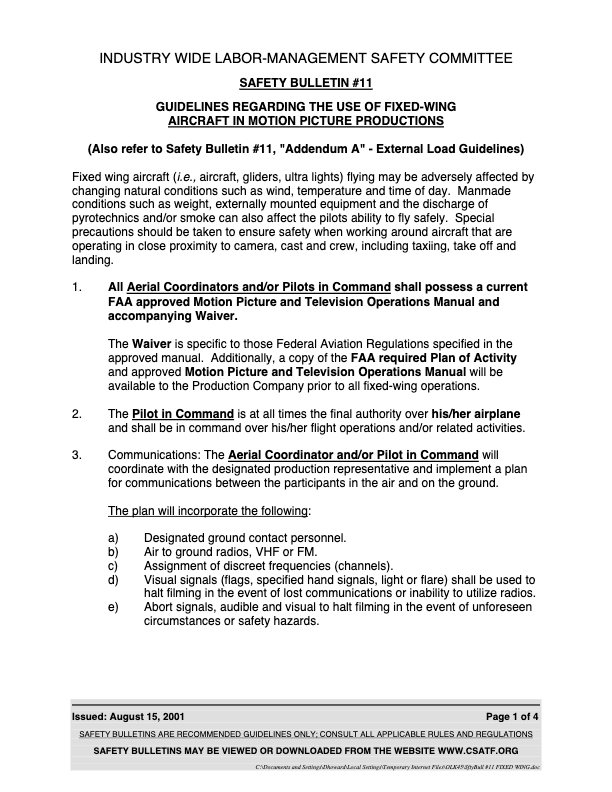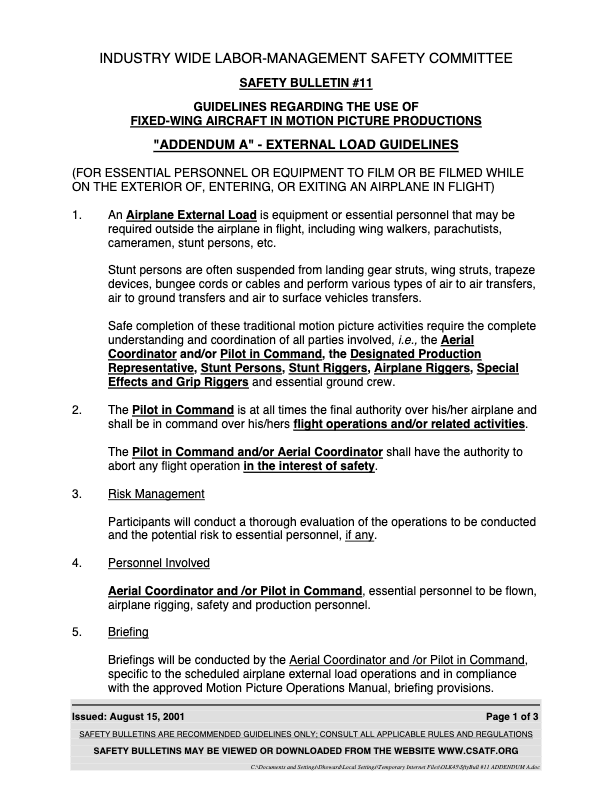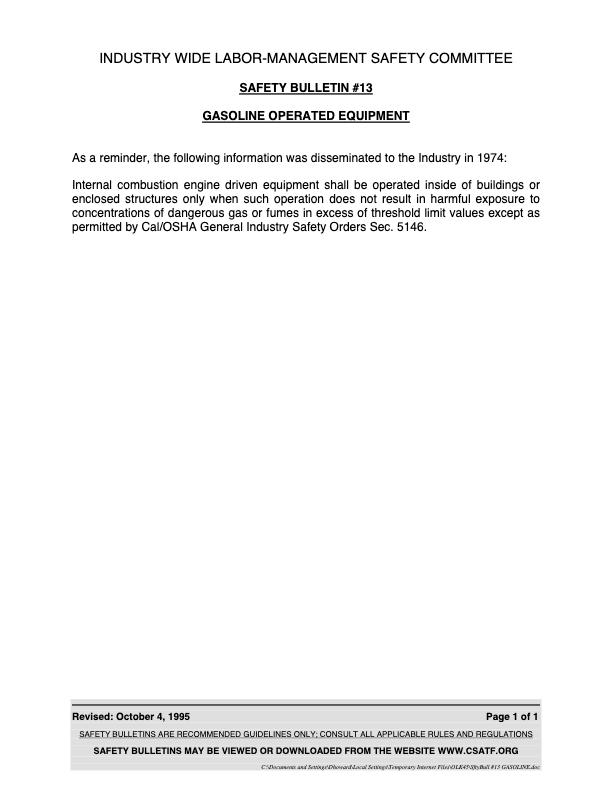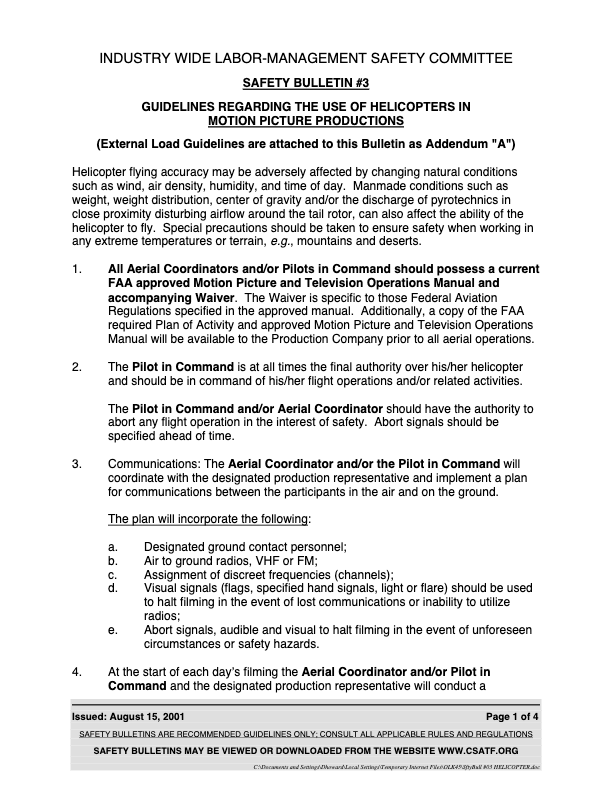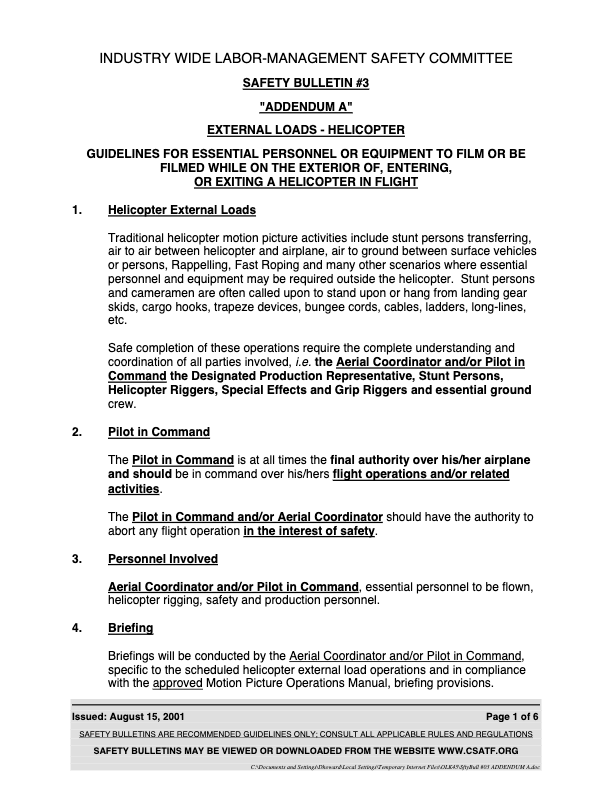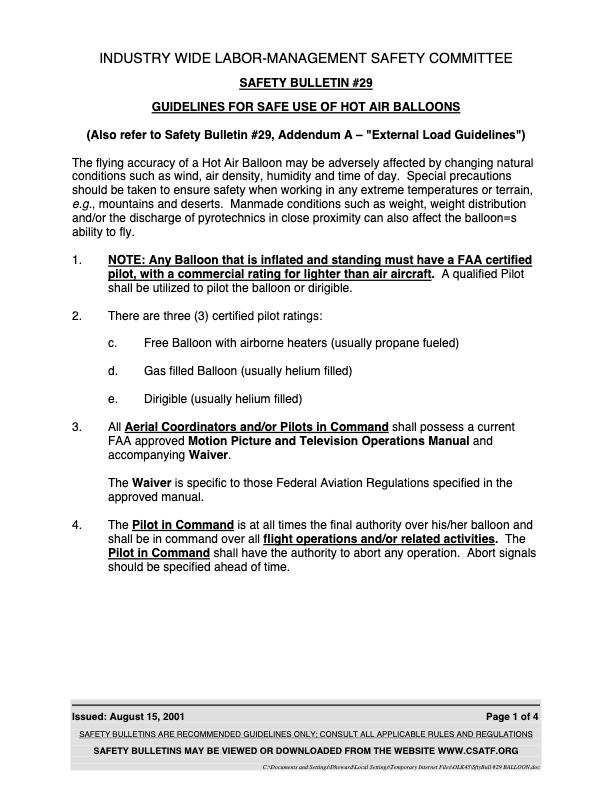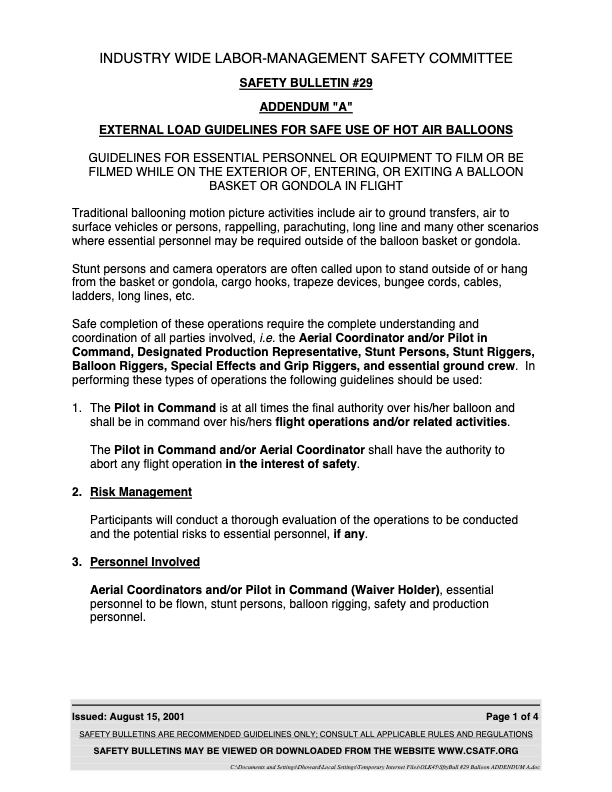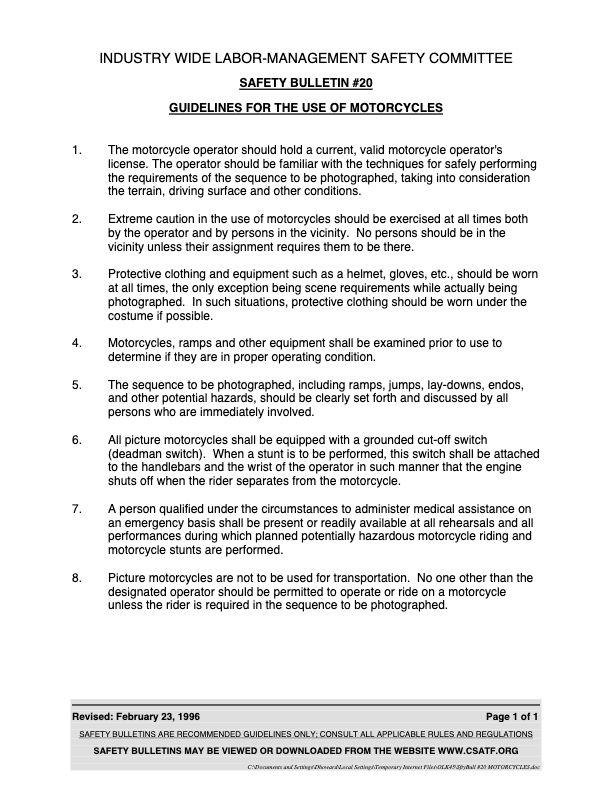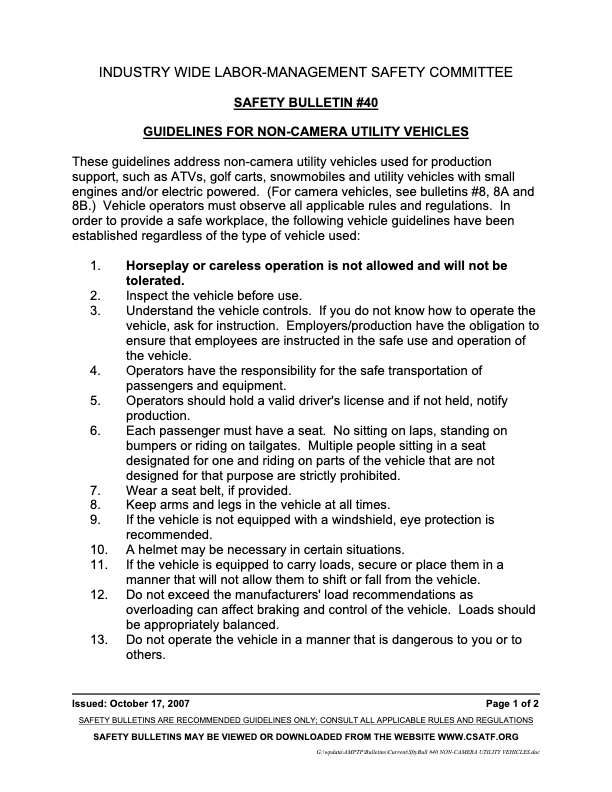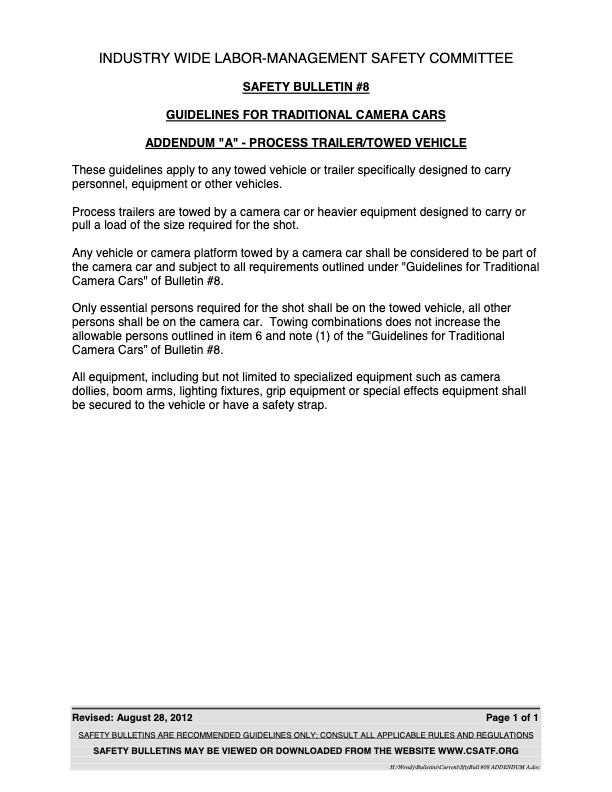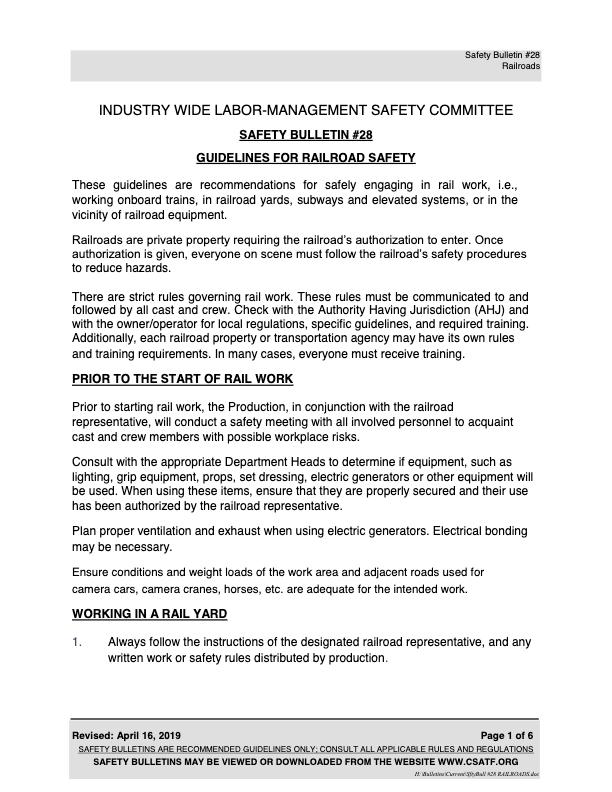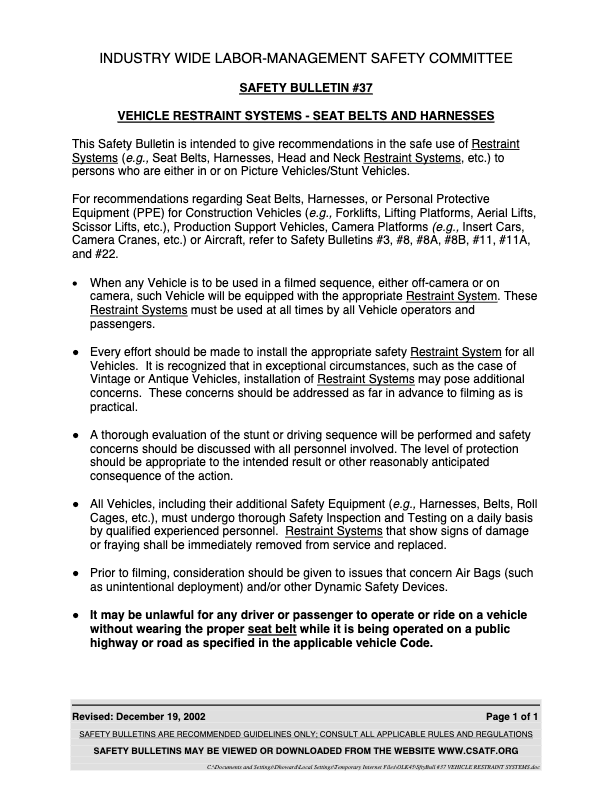This includes: Booms, Camera & Insert Cars, Cranes, Process Trailers, Tow Dollies, Camera Dollies, Elevated Platforms, Fixed Wing Aircraft, Boats, Cars, Helicopters, Motorcycles, and Trains.
Important Guidelines
All filming equipment and vehicles are potentially hazardous. Therefore, they should only be used for their intended purpose and only qualified personnel — who have obtained sufficient training from a qualified instructor — are permitted to operate filming equipment or filming vehicles. Operators and passengers of all vehicles should always use appropriate Personal Protective Equipment (PPE).
Be aware of load and rider capacities. Ratchet straps and/or ropes are the preferred method of securing loads and/or equipment. If using bungees, rubber snubbers, or other elastic devices, ensure they are not frayed, worn, damaged, or cracked, or have damaged hooking devices. Uncontrolled release can cause severe injuries to unprotected body parts, particularly to the face or eyes.
Be particularly cautious when driving, walking or traveling; proceed slowly and watch for sudden movements of objects or individuals. Be especially careful when working around helicopters or on runways. Remain at least 50 feet away from helicopters or other aircraft unless directed by the Aerial Coordinator and/or Pilot in Command or ground safety contact. Under no circumstances should you approach the helicopter or aircraft without permission from the ground safety contact or the Pilot in Command. Whether the rotors are turning or not, always approach and leave the helicopter from the front; never walk near or around the tail rotor.
The use of aircraft, boats, trains or cars may require special permits and/or operator certifications. All vehicles, including their peripheral safety equipment (i.e., harnesses, belts, roll-cage, fuel cells, etc.), must undergo thorough safety inspection and testing on a daily basis by qualified experienced personnel.


